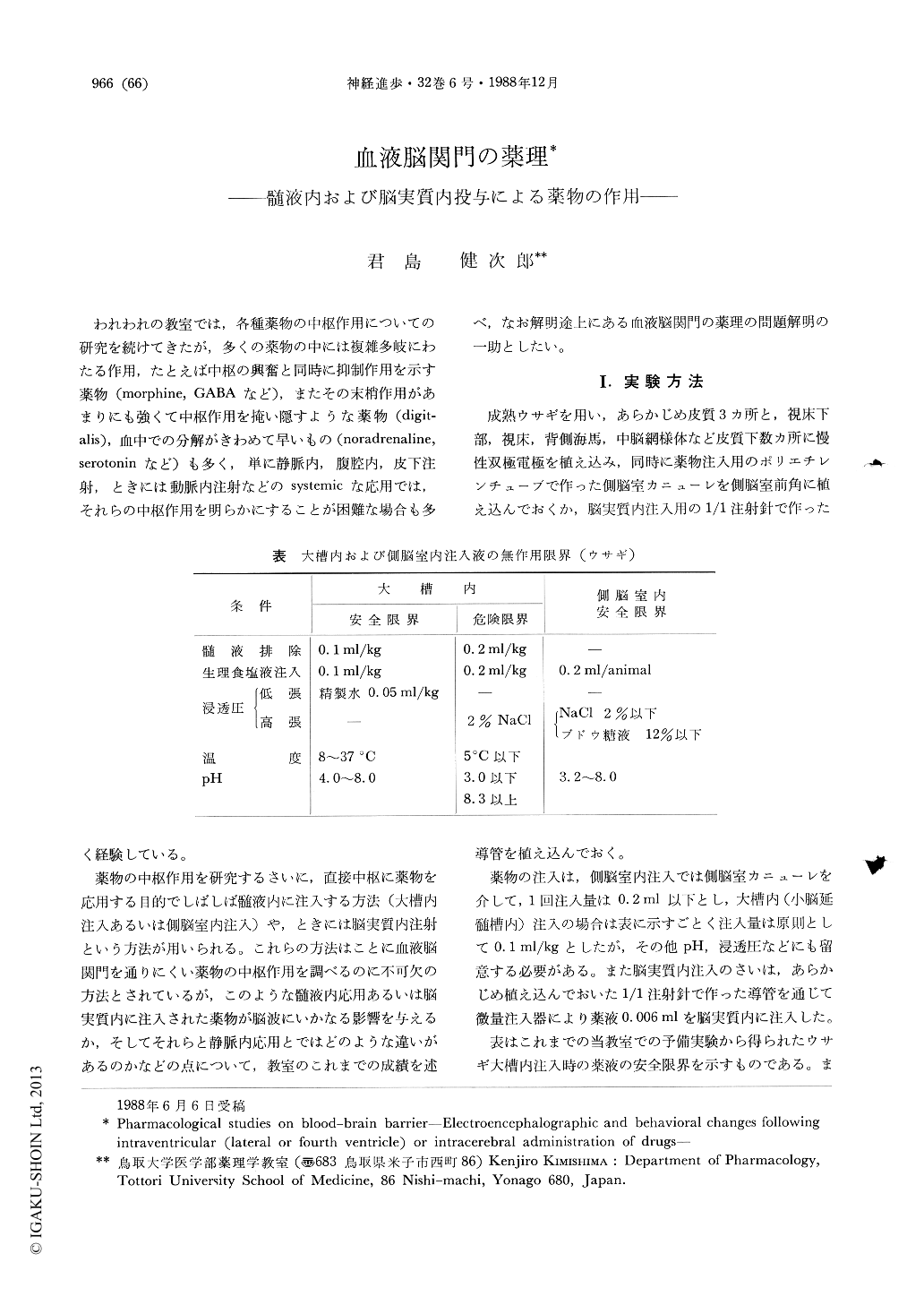Japanese
English
- 有料閲覧
- Abstract 文献概要
- 1ページ目 Look Inside
われわれの教室では,各種薬物の中枢作用についての研究を続けてきたが,多くの薬物の中には複雑多岐にわたる作用,たとえば中枢の興奮と同時に抑制作用を示す薬物(morphine,GABAなど),またその末梢作用があまりにも強くて中枢作用を掩い隠すような薬物(digitalis),血中での分解がきわめて早いもの(noradrenaline,serotoninなど)も多く,単に静脈内,腹腔内,皮下注射,ときには動脈内注射などのsystemicな応用では,それらの中枢作用を明らかにすることが困難な場合も多く経験している。
薬物の中枢作用を研究するさいに,直接中枢に薬物を応用する目的でしばしば髄液内に注入する方法(大槽内注入あるいは側脳室内注入)や,ときには脳実質内注射という方法が用いられる。これらの方法はことに血液脳関門を通りにくい薬物の中枢作用を調べるのに不可欠の方法とされているが,このような髄液内応用あるいは脳実質内に注入された薬物が脳波にいかなる影響を与えるか,そしてそれらと静脈内応用とではどのような違いがあるのかなどの点について,教室のこれまでの成績を述べ,なお解明途上にある血液脳関門の薬理の問題解明の一助としたい。
Six pairs of bipolar electrodes were chronically implanted into the dorsal hippocampus, thalamus, hypothalamus, frontal, parietal and occipital cortex of rabbits, and their EEG and general behavior were observed in an unanesthetized and pillory-fastened condition.
Intraventricular norepinephrine induced behavioral sedation and EEG synchronization. Effects of intraventricular bemegride, chlorpromazine, reserpine and procaine were similar to those of intravenous injection. Hexobarbital exerted excitatory effects of EEG, and morphine elicited a violent motor excitation and a definite arousal patterns in the EEG when injected intraventricularly.

Copyright © 1988, Igaku-Shoin Ltd. All rights reserved.


